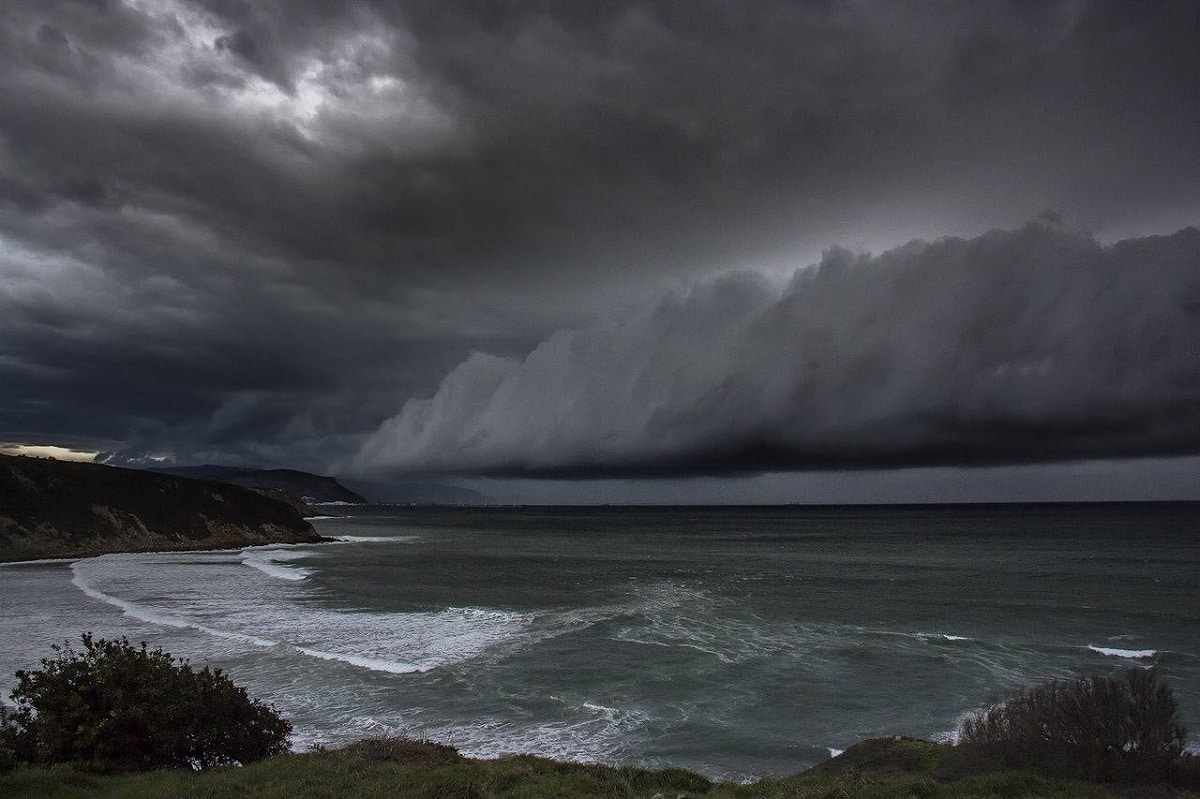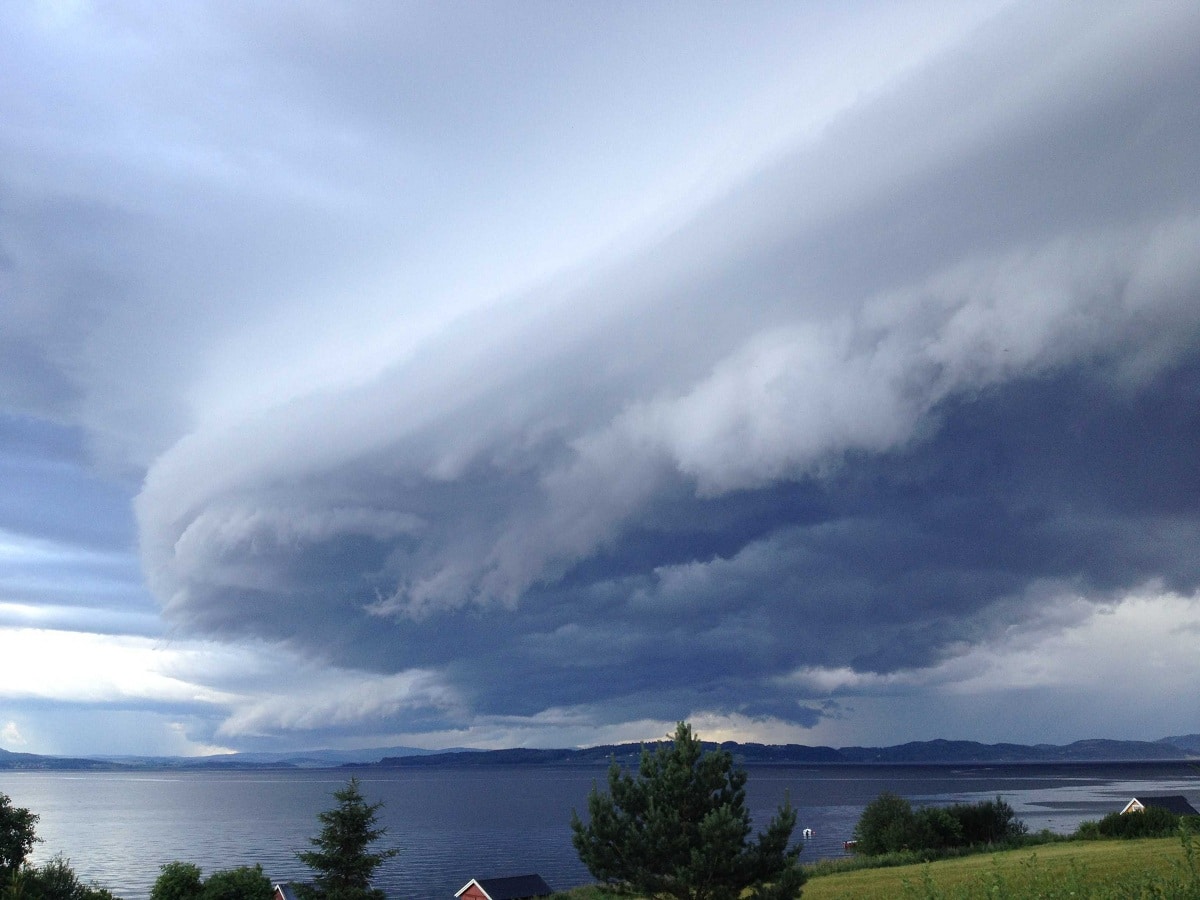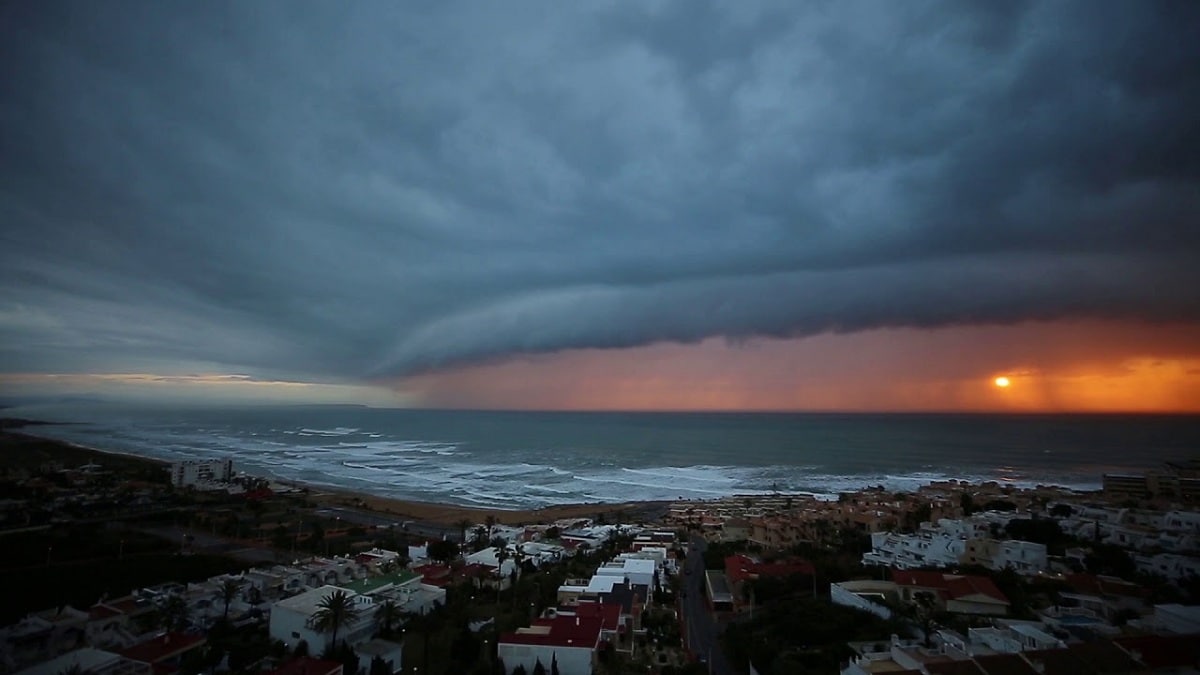
Due to the spectacular nature of the clouds and the serious phenomena associated with them, the arcus cloud it is one of the most coveted creations of storm chasers in our country. In addition, its appearance, its dark side, a dark cloud, lined up on one or several floors or platforms, usually accompanied by a rapid movement of an electronic device, makes it appear very conspicuous to the observer. However, the name arcus seems to be used too easily and sometimes lightly.
In this article we are going to tell you everything you need to know arcus cloud, its characteristics and what it indicates.
arcus cloud
According to the cloud map classification, cumulonimbus arcus is a cumulonimbus-type storm cloud with the peculiarity of having an arc-shaped bottom. Even cumulus clouds can be associated with this property. However, for practical purposes, when we use the word "arcus", we mean a severe thunderstorm, and the storm cloud that brings it to life is the cumulonimbus. The base must have a clear arch
When do they usually form?

In terms of radar, when can we expect these types of clouds to form? When the processed weather radar data show us a linear storm system, a squall line.
But more than that, squall lines must also be made up of organized, severe storm cells. The most obvious case is the arc-shaped squall line, known in English as bow echo. Therefore, it is understandable that we have to be careful when using the term arcus cloud, although this is not a problem for experienced storm chasers.
Because the term is sometimes used when a curtain of heavy precipitation is observed on the horizon, whose perspective may have a certain arc, but it only represents the transition between the zone without precipitation and the part with precipitation. A front associated with heavy rain, with or without thunderstorms.
Sometimes these clouds can organize themselves to form a line of several kilometers. The image of the headline of this news and the photo below, together with the radar images, correspond to the arc observed in the Bay of Malaga in 2004, which can extend along an arc of almost 50 kilometres. As we saw in 2012, bows can sometimes be embedded in the structure of other clouds, such as stratocumulus.
cumulonimbus clouds

Cumulonimbus clouds are clouds that develop vertically, that is, when the air layer is low (warm) and high (cold). This and other more complex atmospheric processes bring enormous moisture to the very high atmospheric regions, through the formation of large masses of ice in the highest parts of the clouds through water vapor, and hail begins to descend, creating downdrafts. .
These large turbulent flows create a lot of friction, which generates static electricity. Over time, this process can become very large until it creates a large difference in electrical potential between different areas of the cloud or from the ground, eventually producing lightning.
Characteristics of the arcus cloud

Arcus clouds are low, horizontal wedge-shaped and arc-shaped clouds. They are also called platform clouds and adhere to the base of the parent cloud, usually cumulonimbus Thunderstorms, but they can form in any type of convective cloud.
The upward motion of the cloud is often seen in the main (outer) part of the cloud shelf, while the lower part is often turbulent and wind-torn. Cold air from the sinking storm cloud spreads to the Earth's surface with a leading edge called a gust front. This outflow is cut off under warm air entering the storm's updraft.
As lower, cooler air lifts warmer, more humid air, its water condenses and forms clouds (wind shear) that are often swept up and down by different winds.
People who see shelf clouds may think they see wall clouds. This could be a mistake, as the approaching cloud shelf appears to form a cloud wall. Platform clouds generally appear in the front of the storm, while wall clouds generally appear to the rear of the storm.
A strong gust front will cause the lower part of the cloud shelf front to zigzag, bordered by rising fragmentation clouds. In severe cases, eddies develop along the edges, and the scuds twisted can reach the ground or be accompanied by rising dust. The very low-lying shelf clouds that accompany these signs are the best indicator that a potentially severe storm is on the way. An extreme example of this almost tornado-like phenomenon is called a gust.
Consequences
The truth is that when this cloud is in the Earth's atmosphere, it can negatively affect life on Earth. Let's see what its consequences are:
- Ray: This cloud releases electrical storms, a phenomenon that we all experience throughout our lives. Although lightning can damage electrical infrastructure, it is unlikely to reach the human body.
- Floods: Flooding or even overflowing of rivers or lakes can occur due to the effects of heavy rains.
- Hail: This solid precipitation can wreak havoc on agriculture, destroying farmland. In addition, the relatively large sizes of hail can cause injury to those directly affected.
- winds and tornadoes: This type of cloud can cause strong winds that can uproot trees. In extreme cases, a tornado can occur, a phenomenon that destroys everything in its path.
Despite these negative effects, it should be noted that human beings have become accustomed to living with this phenomenon and, therefore, the risk of suffering an accident caused by an arcus cloud is very low. In other areas, such as air transport, this cloud must be taken into account because its effects can cause significant damage to aircraft, such as the effects of lightning or turbulence caused by strong gusts of wind.
I hope that with this information you can learn more about the arcus cloud and its characteristics.